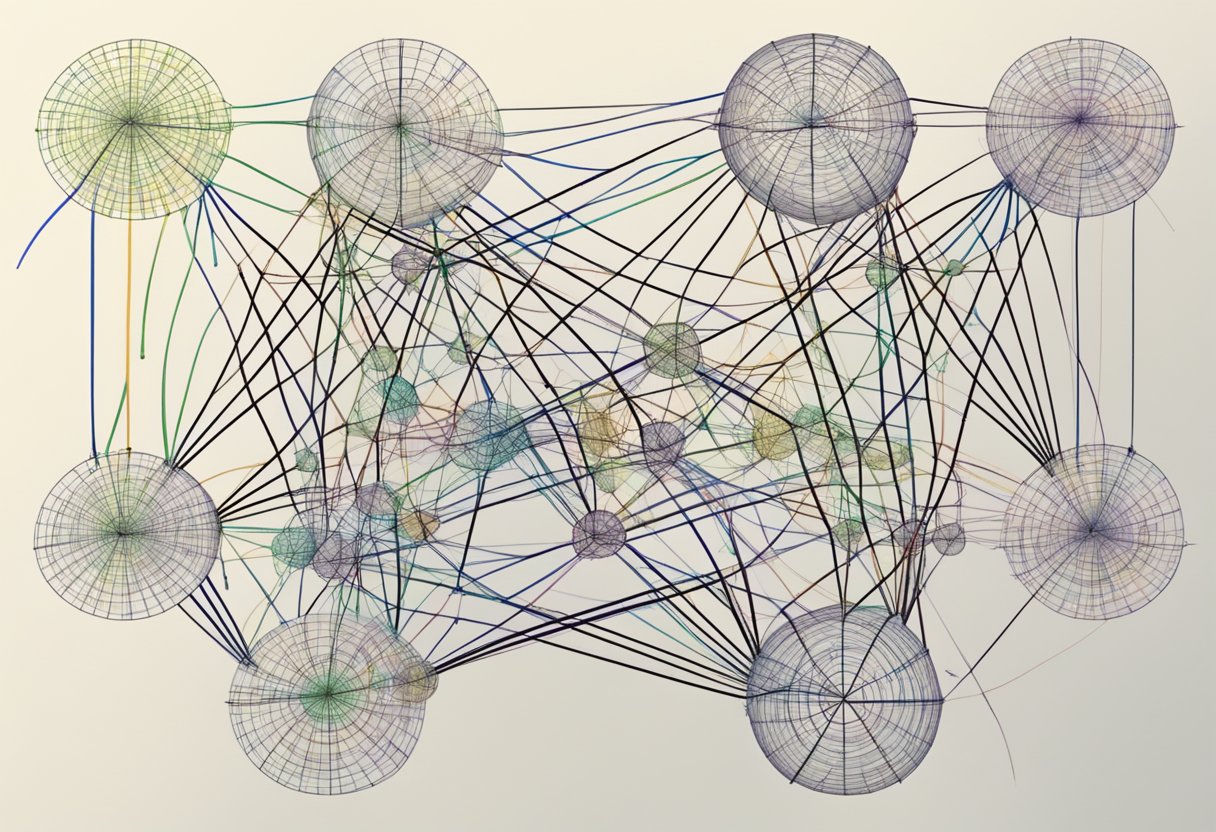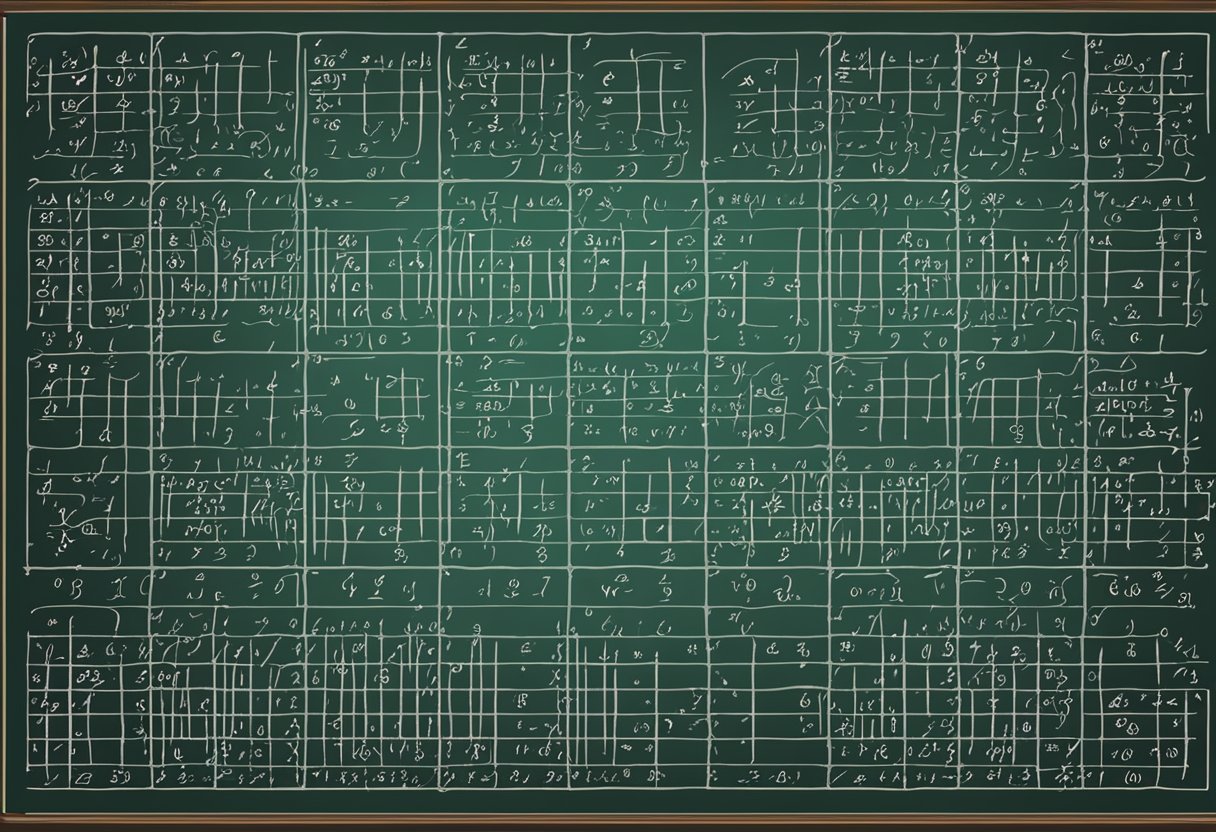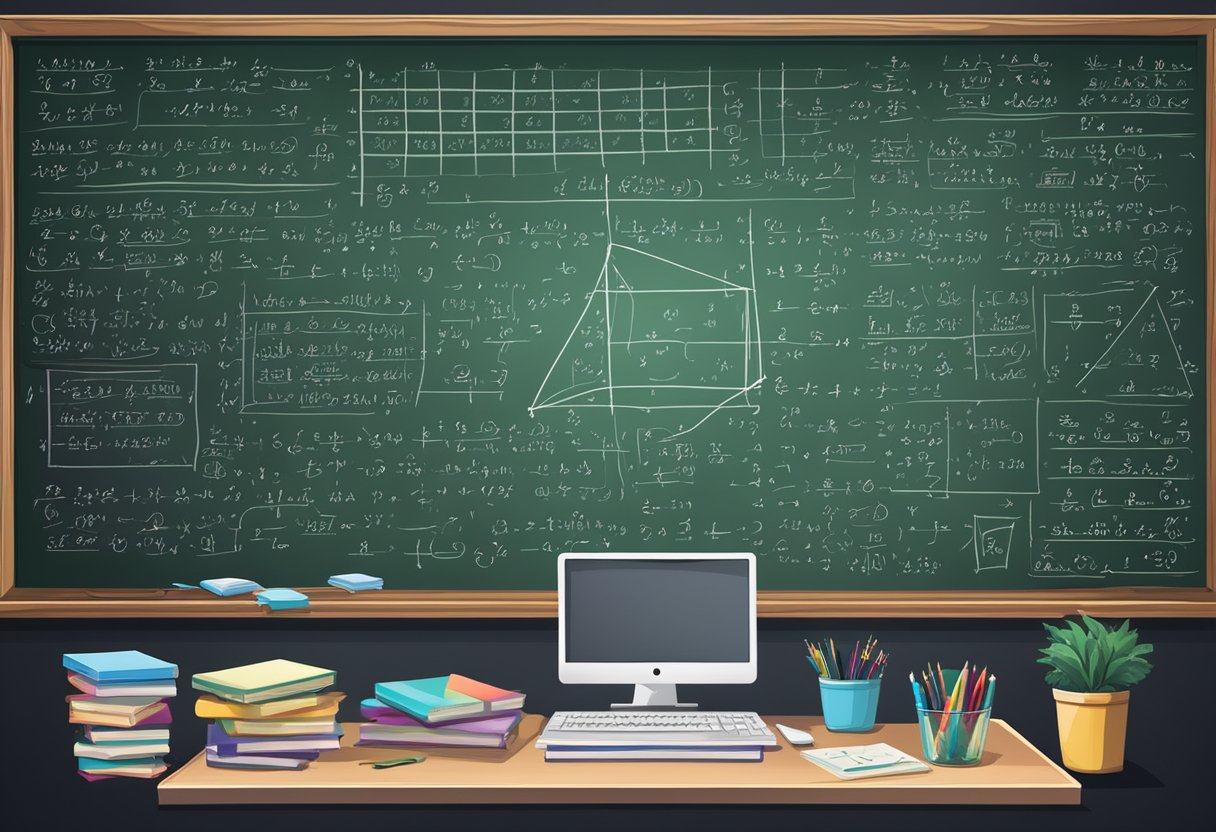JUMP TO TOPIC
Linear algebra often presents a notable challenge for many students, especially those encountering it for the first time at university level. We recognize it as a fundamental branch of mathematics, pivotal for various STEM fields like engineering and physics. Its reputation for being difficult primarily stems from the abstract nature of the concepts involved—such as vector spaces, linear transformations, and matrices—as well as the rigorous proofs that underpin these ideas.

Our experience suggests that the initial encounter with linear algebra can be demanding because it typically requires a different style of thinking compared to calculus or algebra that one might have studied previously. It demands a strong analytical mindset and the ability to abstractly visualize problems, which are crucial skills in advanced fields of study and research.
For those of us teaching or studying within a university setting, we recognize that the complexity of linear algebra is matched by its utility. It’s not just an academic hurdle; instead, it is a powerful tool that’s extensively applied across various scientific disciplines. From quantum mechanics to complex networks, the principles of linear algebra serve as the backbone for critical theories and applications. Therefore, the effort we put into understanding this subject pays off with a deepened ability to solve a wide array of practical and theoretical problems.
Conceptual Overview of Linear Algebra

Linear algebra serves as the cornerstone of advanced mathematics and numerous applications in science and engineering. By grasping its foundational concepts and appreciating the significance of vector spaces and matrices, we equip ourselves with tools essential for understanding complex systems.
Fundamental Concepts and Definitions
Linear algebra is a field of mathematics that encompasses vectors, vector spaces, linear transformations, and matrices. A vector is a mathematical object with both magnitude and direction and can be represented in a coordinate space. In broad terms, vector spaces (or linear spaces) consist of a set of vectors that can be added together and multiplied by scalars to produce another vector within the same space.
Key to our understanding is the concept of linear transformations, which are rules that map vectors from one vector space to another, preserving operations of vector addition and scalar multiplication. Abstractly, linear transformations can represent systems of linear equations, reflecting their fundamental role in linear algebra.
The matrix is a rectangular array of numbers, symbols, or expressions, representing a linear transformation or a system of linear equations. Matrices are instrumental for solving linear equations, performing linear transformations, and can be used to encode information about geometric transformations.
Importance of Vector Spaces and Matrices
Vector spaces are pivotal in linear algebra as they provide a context within which we can analyze vectors and linear transformations. In geometry, vector spaces enable us to model and solve problems in three dimensions and beyond. The study of vector spaces intersects with abstract algebra, particularly when examining structures like fields and groups that underpin vector spaces.
Matrices are not just a computational tool; they embody the essence of linear transformation. Each matrix corresponds to a linear transformation, and the manipulation of these matrices allows us to carry out complex transformations and operations on vector spaces. Whether in theoretical or applied mathematics, understanding matrices is essential for grasping the depth of linear transformations and their impact on vector operations across various fields.
By methodically working through the structure of linear algebra, we reveal the intricate framework that underpins many areas of mathematics and applied disciplines.
Mathematical Building Blocks

In this section, we explore the essential components of linear algebra that serve as the foundation for more complex topics. Understanding these elements is crucial for success in the subject.
Vectors and Operations
Vectors represent quantities that have both magnitude and direction, and they are essential in describing lines and planes in space. Operations with vectors, such as addition, subtraction, and scalar multiplication, are fundamental actions that allow us to manipulate these entities. For instance, if we consider vectors u and v defined as u = (1, 2) and v = (3, 4), the addition u + v results in a new vector (4, 6).
Matrices, Determinants, and Systems of Equations
Matrices are array-like structures that systematically represent coefficients of linear equations. They are vital tools used to solve systems of linear equations through methods such as Gaussian elimination. A determinant is a special scalar value that can be computed from a square matrix. It provides crucial insights into the properties of the matrix, such as invertibility and the behavior of linear systems.
| Matrix | ||
|---|---|---|
| a | b | c |
| d | e | f |
| g | h | i |
Determinant: det(A) = a(ei – fh) – b(di – fg) + c(dh – eg)
The solution of a system of linear equations can be represented in matrix form, ( Ax = b ), where ( A ) is a matrix, ( x ) is a vector of variables, and ( b ) is the vector of constants.
Abstract Vector Spaces and Axioms
An abstract vector space is a set of objects, where vectors are not restricted to being points or arrows in space but can have more general properties as defined by a set of rules called axioms. These axioms define operations like vector addition and scalar multiplication within the vector space. Understanding vector spaces requires us to recognize these axioms as the backdrop for more advanced theorems and properties.
Vector Space Axioms Example:
- Additive identity: There exists a vector 0 in V, such that for all u in V, u + 0 = u.
- Additive inverse: For every vector u in V, there exists a vector -u in V, such that u + (-u) = 0.
Recognizing and manipulating entities within these constructs is key to mastering linear algebra.
Applications in Advanced Fields

In our discourse on the complexities of linear algebra, we highlight its essential applications in various advanced fields of study and innovation.
Linear Algebra in Physics and Engineering
In physics and engineering, our understanding of the world relies heavily on linear algebra. Eigenvectors and eigenvalues, for instance, are fundamental in solving systems of differential equations that model physical phenomena. We apply these concepts to understand resonance, stability, and control systems in engineering. The optimization of these systems is a crucial aspect that stems from the profound concepts of linear algebra.
The Role of Linear Algebra in Machine Learning and Computer Graphics
Machine learning utilizes linear algebra for algorithms that can predict outcomes and recognize patterns. We employ matrices and vectors to represent data, while matrix factorizations like the Singular Value Decomposition (SVD) help in reducing dimensionality and noise in datasets, leading to more efficient algorithms. In computer graphics, transformations such as rotations and scaling are expressed via matrices, allowing us to simulate realistic three-dimensional environments.
Implications for Economics and Cryptography
Our pursuits in economics benefit from linear algebra through its applications in optimization. We utilize linear programming to maximize profits and minimize costs within the constraints of resource availability. In cryptography, which ensures the security of our data, we base key encryption algorithms on operations within finite fields—a concept derived from linear algebra. This protects sensitive information in digital communications, including transactions in the realm of cyber security.
Theoretical Aspects and Advanced Study

In this section, we explore the core theoretical concepts in linear algebra that often pose challenges in advanced study, such as duality and eigenproblems, and their applications in functional analysis and linear programming.
Duality, Eigenvalues, and Eigenvectors
Duality is fundamental in understanding mathematical structures from the perspective of paired interactions. It allows us to examine the relationship between spaces, such as the primal and dual spaces in linear algebra, through a framework that assesses how linear transformations impact these spaces.
- Eigenvalues and Eigenvectors are critical to the study of linear transformations in algebra. The eigenvalue represents the factor by which the eigenvector is scaled during a transformation. We rely on proofs to establish properties like the existence of eigenvectors for certain matrices.
- The equations Av = λv (where A is a matrix, v an eigenvector, and λ an eigenvalue) represent the foundation for solving eigenproblems.
- Application: Solving differential equations, stability analysis, and optimizing complex systems.
Functional Analysis and Linear Programming
Functional Analysis extends the methods of vector spaces and linear algebra to infinite-dimensional spaces. We use this branch of mathematics to understand and solve optimization problems, often employing theorems like the Hahn-Banach theorem, which is pivotal in proving the existence of linear functionals.
- Linear Programming is a method to achieve the best outcome in a mathematical model. Its specific requirements are:
- Linear relationships expressing the conditions of optimization.
- Definitions and theorems that guide in formulating and solving these optimization problems.
- Application: We apply linear programming in resource allocation, cost minimization, and maximizing profits within given constraints.
- The Simplex Algorithm is a classic method for solving linear programming problems, utilizing a tabular form to find the optimal solution through an iterative process.
Challenges and Support in Learning Linear Algebra
As we navigate the complex world of linear algebra, we encounter various challenges that can impede our progress. To address these effectively, it is crucial to understand common difficulties and utilize a range of resources available to learners.
Common Difficulties and Misconceptions
In our exploration of linear algebra, we often face conceptual hurdles. A primary difficulty lies in grasping abstract concepts such as vector spaces and linear transformations without concrete examples. This is compounded by common misconceptions, like the assumption that matrix multiplication is commutative when, in fact, for two matrices A and B, AB ≠ BA in most cases. Our transition from computational to theoretical mathematics can pose significant challenges, as it requires a deeper level of understanding and strong analytical skills.
At the university level, beginners may find the shift in teaching methods from previous math courses a challenge. It’s not uncommon for textbooks to present information densely, which can be overwhelming. Effective linear algebra courses within a university’s department should include a mix of theoretical and application-based exercises, fostering a comprehensive understanding. However, if departmental notes and materials don’t clarify questions early on, students may struggle with accumulating gaps in their knowledge.
Resources for Students and Self-learners
For those of us committed to self-study or seeking additional support, a plethora of resources is at our disposal. Textbooks and university lectures are foundational, yet often not enough. We recommend:
- Guided Notes and Worked Examples: Many departments offer supplementary notes. These often include step-by-step explanations of exercises which are invaluable for grasping complex procedures.
- Mathematical Software: Tools such as MATLAB or Mathematica can aid in understanding through visualization and tackling complex problems that are otherwise time-consuming by hand.
- Online Platforms: Websites like Khan Academy or MIT’s OpenCourseWare provide free courses that include video lectures and exercises with solutions, making self-study more interactive and less daunting.
It is also beneficial to look for real-life applications of linear algebra, as they provide context that can illuminate why certain concepts are necessary and how they are used, making them easier to understand and remember. Engaging in a combination of these resources allows us to tackle linear algebra with a multi-faceted approach, enhancing our comprehension and ability to apply knowledge effectively.
